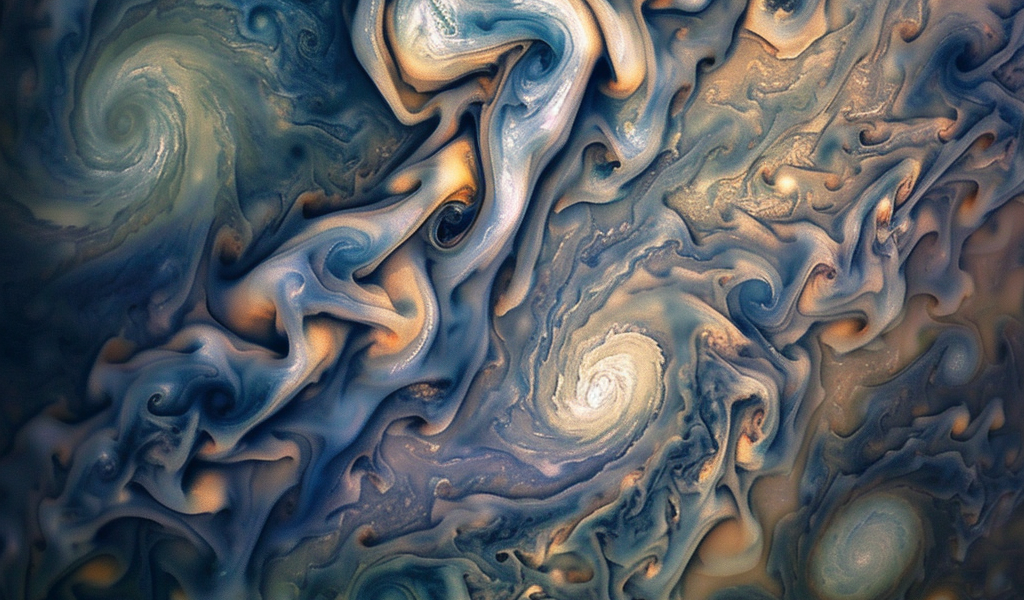NASA’s Juno spacecraft has once again astonished the world with its latest stunning images of Jupiter, showcasing the planet’s chaotic atmosphere and intricate weather patterns. During its 61st close flyby on May 12, 2024, Juno provided a spectacular view of Jupiter’s northern hemisphere, revealing a dramatic landscape of turbulent clouds and cyclonic storms.
Launched in 2011, Juno’s primary mission is to delve into the dynamics and composition of Jupiter’s atmosphere. This ongoing exploration has been enriched by the contributions of citizen scientists, who play a crucial role in processing the raw data collected by the spacecraft. One such citizen scientist, Gary Eason, utilized advanced digital processing techniques to transform the raw images captured by JunoCam into vibrant representations of the giant planet.
The processed images highlight a region known to scientists as a folded filamentary area, where the zonal jets that typically create Jupiter’s iconic banded cloud patterns begin to break down. This breakdown leads to rapidly evolving turbulent patterns and complex cloud structures, providing a glimpse into the dynamic nature of the planet’s atmosphere.
In the latest images, viewers can observe the striking contrast between the bluish tones of Jupiter’s poles and the swirling sand storms that characterize its equatorial regions. At the time the images were taken, Juno was positioned approximately 18,000 miles (29,000 kilometers) above Jupiter’s cloud tops, at a latitude of about 68 degrees north of the equator. This unique vantage point allowed scientists to capture unprecedented details of the planet’s northern hemisphere.
The Juno mission has been instrumental in enhancing our understanding of Jupiter’s evolution and its role in the early solar system. The data collected not only sheds light on the giant planet’s atmospheric dynamics but also provides clues about the formation and evolution of planetary systems.
As Juno continues its journey, it is expected to deliver even more breathtaking images and valuable scientific data. The ongoing engagement of citizen scientists exemplifies the collaborative nature of modern space exploration, allowing enthusiasts and experts alike to contribute to our understanding of the universe.
NASA’s commitment to transparency and public engagement ensures that the discoveries made by Juno will be shared widely, inspiring future generations of scientists and explorers. With each flyby, Juno not only captures the beauty of Jupiter but also deepens our knowledge of the cosmos.
As the mission progresses, the scientific community eagerly anticipates further revelations about Jupiter’s atmosphere, its magnetic field, and its potential for hosting life. The ongoing analysis of Juno’s data will undoubtedly lead to new insights into the complex interactions that govern planetary atmospheres and their evolution over time.
In summary, the Juno spacecraft’s latest images are a testament to the power of technology and collaboration in the pursuit of knowledge. As we continue to explore Jupiter and beyond, the mysteries of our solar system become a little clearer, paving the way for future discoveries and advancements in space science.





